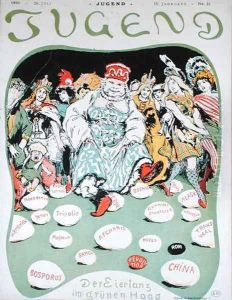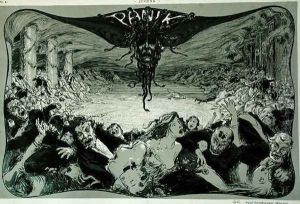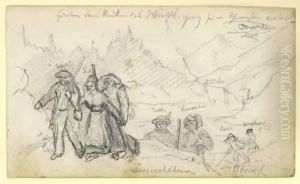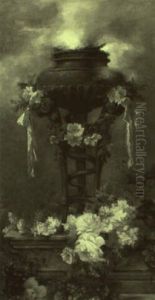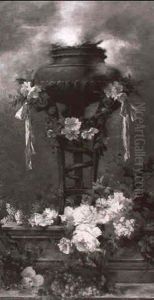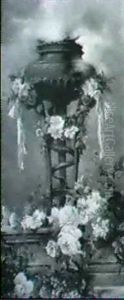Arpad Schmidhammer Paintings
Arpad Schmidhammer was a notable Hungarian illustrator and painter, best known for his contributions to children's literature and satirical magazines. Born on May 11, 1857, in Pest, which is now part of Budapest, Hungary, Schmidhammer grew up during a period of significant cultural and political change in Europe. His early exposure to the arts led him to pursue a career that would see him become one of Hungary's most revered artists of his time.
Schmidhammer's education in art began at the Hungarian University of Fine Arts, where he honed his skills and developed a distinctive style that blended realism with a whimsical, often humorous approach to subjects. Early in his career, he contributed to various publications, quickly establishing himself as a skilled illustrator. His work was characterized by a keen observational ability and a flair for capturing the essence of daily life, folklore, and the human condition with both empathy and satire.
In the late 19th and early 20th centuries, Schmidhammer gained widespread recognition for his illustrations in children's books and magazines. He had a unique talent for bringing stories to life through his detailed and expressive illustrations, making him a beloved figure among young readers. His contributions to children's literature are considered some of his most enduring legacies, showcasing his versatility and deep understanding of narrative visual storytelling.
Beyond his work for children, Schmidhammer was also a prolific contributor to satirical magazines, where his sharp wit and critical eye were well suited to the commentary of the day. Through his illustrations, he often addressed social and political issues, employing humor and caricature to critique the establishment and reflect the societal changes happening around him.
Arpad Schmidhammer's contributions to art extended beyond illustration. He was also an acclaimed painter, with works that captured the landscapes and people of Hungary with sensitivity and depth. His paintings, like his illustrations, are praised for their vibrant detail and emotional resonance.
Schmidhammer's career spanned a turbulent period in European history, including the Austro-Hungarian Empire's decline and the aftermath of World War I. Despite these challenges, his work remained a beloved part of Hungarian culture, offering both escapism and critical reflection through the changing times.
Arpad Schmidhammer passed away on December 12, 1921, leaving behind a rich legacy of artistic achievement. His work continues to be celebrated for its contribution to Hungarian art and culture, and his illustrations remain a cherished part of the country's literary heritage. Schmidhammer's ability to capture the spirit of his time, while also producing timeless works of art, has ensured his place in the annals of art history.
